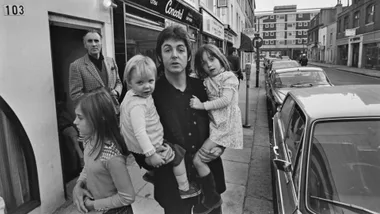Teething and the thrush sometimes associated with it, it something that all parents will need to navigate at some point in the journey.
These helpful tips will help you to understand that time a little better.
What is teething?
Teething is the period during which your baby cuts his first set of teeth. Babies are born with their primary or milk teeth in place, but you won’t see the first tooth until he is six to nine months old. The bottom front teeth (incisors, with sharp edges for biting) are the first to come through, followed by the top front teeth.
This is generally painless. Next to come are the first molars (large back teeth for grinding food), at around 12 to 15 months, which are more painful. These are followed by the canines (pointed teeth which tear at food), at around 16- 18 months. The second molars appear at 20-24 months. All 20 milk teeth are usually through by the age of three.
READ NEXT: The best toilet training seats for your little one

Babies are born with their primary or milk teeth in place!
How can I tell that my child is teething?
Before a tooth emerges you may notice that:
He puts everything in his mouth
His gums look more red
His cheeks may look inflamed
He is very irritable
He has a sore bottom
He may run a slight fever
He develops mild diarrhoea
It is also possible that there’s no noticeable change in his behaviour or symptoms
Continues after video …
How to ease the pain of teething
Give him something to chew. Teething rings and big pieces of chilled apple or carrot will help to soothe his gums – watch him carefully to make sure he doesn’t break off a small piece which could cause choking.
Run some teething gel on his gums. Gels often contain an anesthetic to give temporary relief.
Rubbing his gums with your finger can also help.
Give him infant paracetamol, suitable from three months, to ease any pain or to lower a mild fever.
Make sure he drinks plenty of fluids; offer him cool, boiled water. Excessive drooling could mean that he is thirsty.
READ NEXT: How often can I give my baby Panadol
Emergency checklist
There are a range of complaints that are not caused by teething and which need to be treated:
High temperature – above 38 degrees C. This could be due to an infection, especially if it continues for more than 24 hours
Diarrhoea, if it continues for more than 24 hours
Earache
Chest infections
READ NEXT: Pumping vs breastfeeding

Teething babies will usually try putting everything in their mouth!
What is thrush?
Thrush is a common infection in babies and children, but it’s rarely serious. It commonly develops in the mouth of babies and young children. It sometimes appears around the anus, buttocks and thighs.
What causes thrush?
Thrush is caused by a yeast-like fungus called Candida albicans. It lives naturally on the skin and in the vagina, mouth and bowel, alongside other bacteria that the body needs. But this natural balance can spiral out of control, for example, when the body’s immune system is disturbed by a taking a course of antibiotics. This allows the candida to flourish, and once this happens it quickly multiples, damaging mucous membranes and causing inflammation.
Continues after video …
How can I tell if my child has thrush?
You may see:
White spots on a red rash starting around the anus, which spreads to his buttocks and inner thighs
A bright red nappy rash that isn’t helped by normal creams
He may refuse feeds
Spots inside his cheeks that look like the remains of milk which, when wiped gently with a tissue, revel a sore red patch beneath
Coping with thrush
If you think that your baby may have oral thrush, consult your doctor.
If you are breastfeeding, you and your partner will need treatment as well as your baby.
If he finds it painful to feed from a bottle or finds it hard to suck from the breast, try spoon-feeding him.
Wash your hands scrupulously after nappy changes and before feeds.
If the thrush develops during a course of antibiotics, finish the treatment but use anti-fungal medication at the same time.
If has asthma and develops oral thrush, consult your GP.

Teething rings will help to soothe sore gums.
How can thrush be treated?
Your GP may prescribe:
An antifungal cream for your nipples if you are breastfeeding. But always wash this off before feeding your baby.
An antifungal gel or liquid to be dropped into your baby’s mouth after every feed. The sores should start to improve within a day or two.
A cream for his bottom if he has nappy rash. The sores should start to clear up with two or three days.
If none of these work, consult your GP again because a secondary bacterial infection may have set in top of the thrush.



.png?resize=380%2C285)






